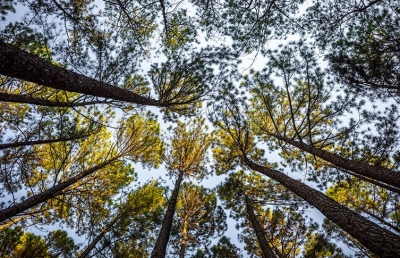
Some trees may ‘social distance’ to avoid disease. Many forest canopies maintain mysterious gaps referred to as ‘crown shyness’. The phenomenon occurs in some tree species when spaces appear in the canopy to prevent branches from touching, forming channel-like gaps which could help trees stay healthy.
Today, a growing body of work continues to support the early observations of Putz and his colleagues. Wind, it seems, plays a crucial role in helping many trees maintain their distance. The boundaries carved by bouts between branches may improve the plants’ access to resources, such as light. Gaps in the treetops might even curb the spread of leaf-munching insects, parasitic vines, or infectious disease.
In some ways, crown shyness is the arboreal version of social distancing, says Meg Lowman, a forest canopy biologist and director of the TREE Foundation. “The minute you start keeping plants from physically touching each other, you can increase productivity,” she says. “That’s the beauty of isolation … The tree is really safeguarding its own health.”
Picture Credit : Google

